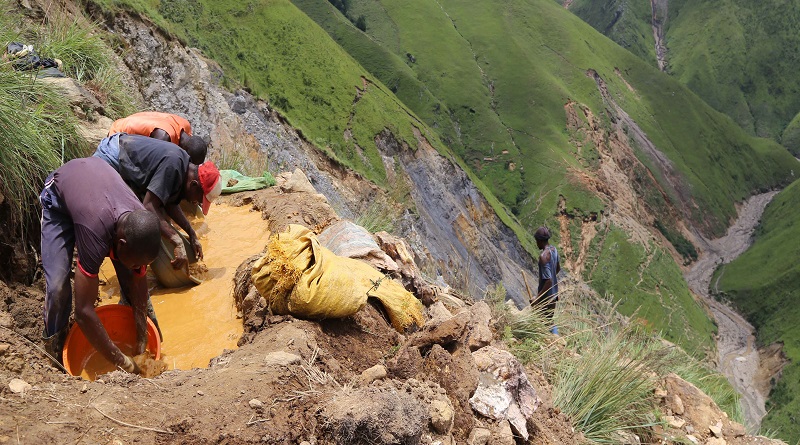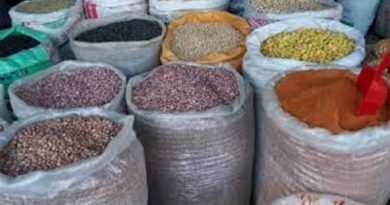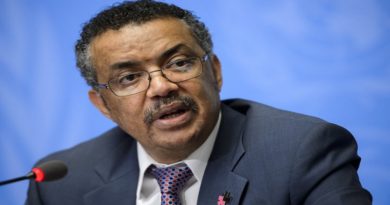New initiative to reduce use of mercury in gold mining
A new project launched recently in Washington DC will strive to formalize artisanal and small-scale gold and reduce the use of mercury in the sector to protect the health of up to 15 million miners worldwide
In a small, remote village in Kalimantan, Indonesia, Pak Huda’s unfocused eyes never stopped moving and a number of nervous tics danced on his face while he denied that the daily use of mercury to extract gold particles was impacting the health of his community.
“People who use mercury are usually in denial about the health impact, unless they’re getting older,” observed Sumali Agrawal, Technical Director of Yayasan Tambuhak Sinta, a local organization helping artisanal miners.
Poverty, little to no economic opportunity, poor governance, a lack of awareness of the dangers of mercury and a lack of knowledge of alternative gold recovery methods, drives some of the world’s poorest people to accept any level of risk to keep plying their trade.
Artisanal and small-scale gold mining is the world’s largest employer in the extraction sector, with up to 15 million miners in 70 countries, including four to five million women and children. It is also a big business, supplying up to 20 per cent of the world’s gold.
But it also comes at a huge cost to public health.
Artisanal and small-scale gold miners pour mercury into ground ore where it merges with gold flecks to form an amalgam— essentially a ball— of mercury and gold. They then burn this ball to evaporate the mercury so what is left is often a tiny porous nugget of gold.
Miners working on this evaporation are consistently exposed to mercury vapours many times above concentration levels considered safe by the World Health Organization.
Excessive use of mercury in the amalgamation process releases large amount of mercury into the environment equivalent to many times the amount of gold produced. This residual mercury finds its way into the natural environment, mostly through runoff into rivers – the very rivers where the communities fish.
This practice is what makes artisanal and small-scale gold mining the largest source of mercury pollution in the world with up to one-third of all emissions coming from the sector.
Excessive exposure to mercury, a neurological toxin, causes serious health problems, deformities and nervous system disorders.
A number of countries, such as Indonesia, have banned the use of mercury in gold mining. But experience has shown that banning is either ineffective or can even make the situation worse if policymakers do not address the root causes of its use.
Mongolia, for example, banned mercury in small-scale mining in 2008 to protect the health of its population after an economic downturn drove many to the lucrative sector. But the Artisanal Gold Council, a non-profit organization dedicated to improving the sector, estimated in 2013 that approximately 11 tonnes of mercury were still used each year in the country.
To circumvent national legislation that prohibits burning mercury, some small‑scale gold miners have resorted to doing so in unprotected areas such as their homes, only amplifying their exposure to the toxic vapours.
“Any solution to the use of mercury by small scale miners will need close collaboration between all stakeholders,” said Dr Kevin Helps, UN Environment Portfolio Manager, Chemicals and Waste.
“The ultimate aim is to ensure the wellbeing of workers and their families whilst improving their livelihoods.”
This month, UN Environment and the Global Environment Facility along with other partners are launching a project called Global Opportunities for Long‑term Development of the Artisanal and Small-Scale Gold Mining Sector (GEF GOLD).
This project aims to reduce the use of mercury in the artisanal and small-scale gold mining sector in eight countries by: promoting sustainable production technologies worldwide and the development of sustainable gold supply chains for the sector; establishing financing access schemes for the miners and supporting countries in fulfilling their obligations under the Minamata Convention on mercury.
Countries under the Convention that have “more than insignificant artisanal and small-scale mining” must develop a National Action Plan that establishes inventory of the sector and a strategy for formalizing the sector, and that sets targets for reducing mercury pollution.
But formalization is not without its challenges. Miners operate in remote areas, making them difficult to reach. Mining legislation is not adapted to this sector, and the governments often lack the capacity to enforce it. Land use is a source of conflict with farmers, and land ownership issues – a source of conflict with mining companies.
The GEF GOLD project will demonstrate and share best practices and educate gold consumers on the social and environmental benefit of cleaner gold. It will pilot access-to-finance options, show the benefits of efficient and cleaner non-mercury techniques, and provide mining communities with direct access to international gold markets, removing barriers across the value chains.
These efforts will support governments in promoting best practices in the sector, such as using better concentration methods, mercury vapour tools like retorts, and chemical extraction, which require increased technical knowledge.
“The good news is that most of the zero mercury practices can yield more gold, so there is also an economic incentive,” said Dr. Kevin Telmer head of the Artisanal Gold Council.
On the ground, for the 15 million artisanal small-scale gold miners like Pak Huda and their dependents, this could mean a healthier, safer and more equitable future.




